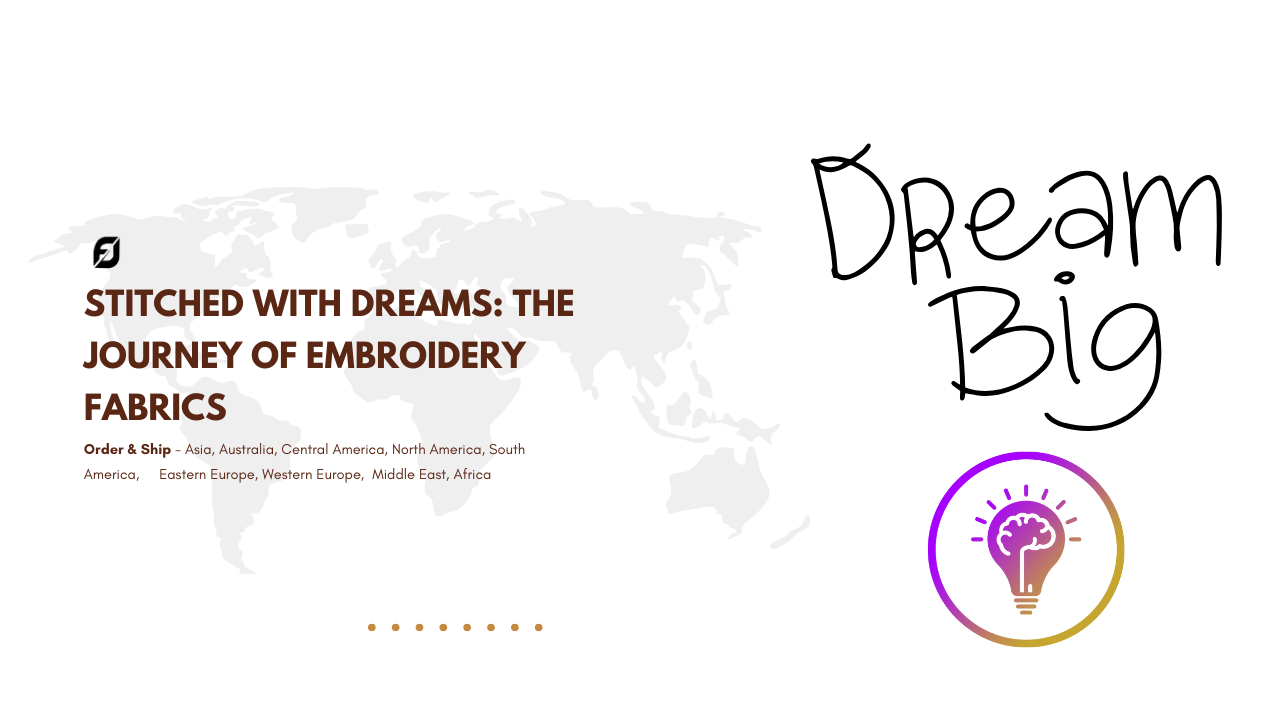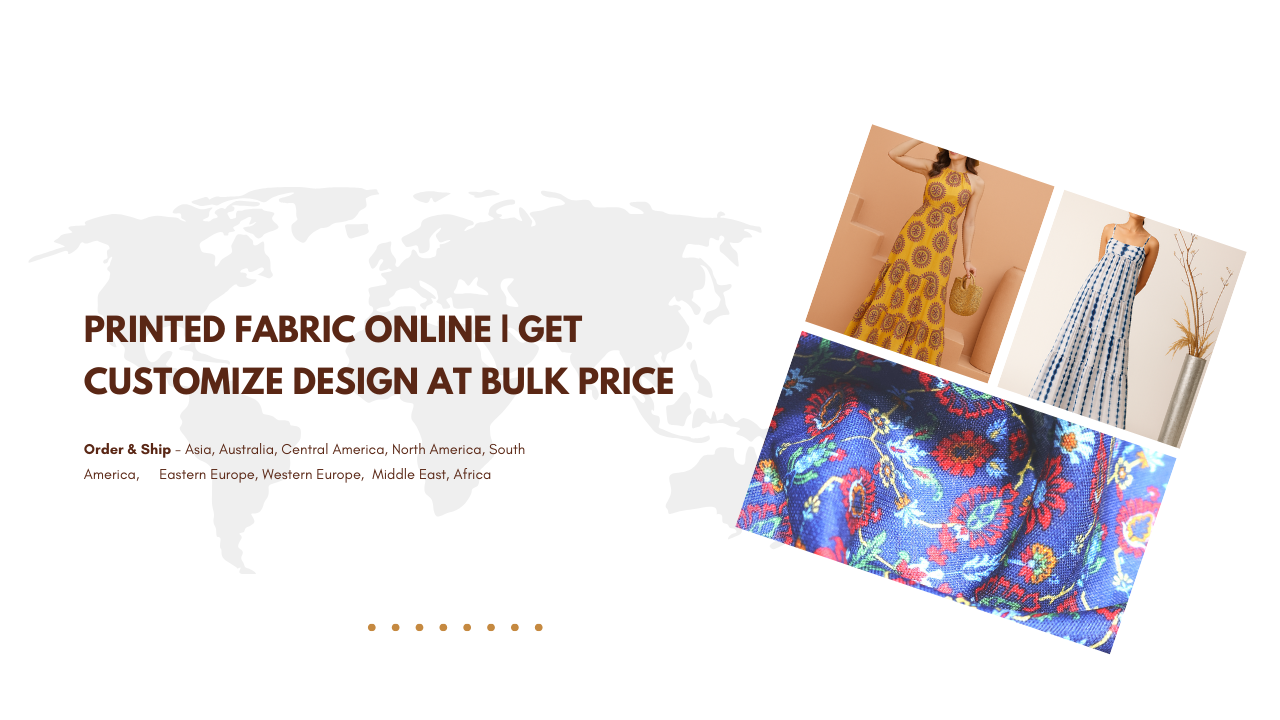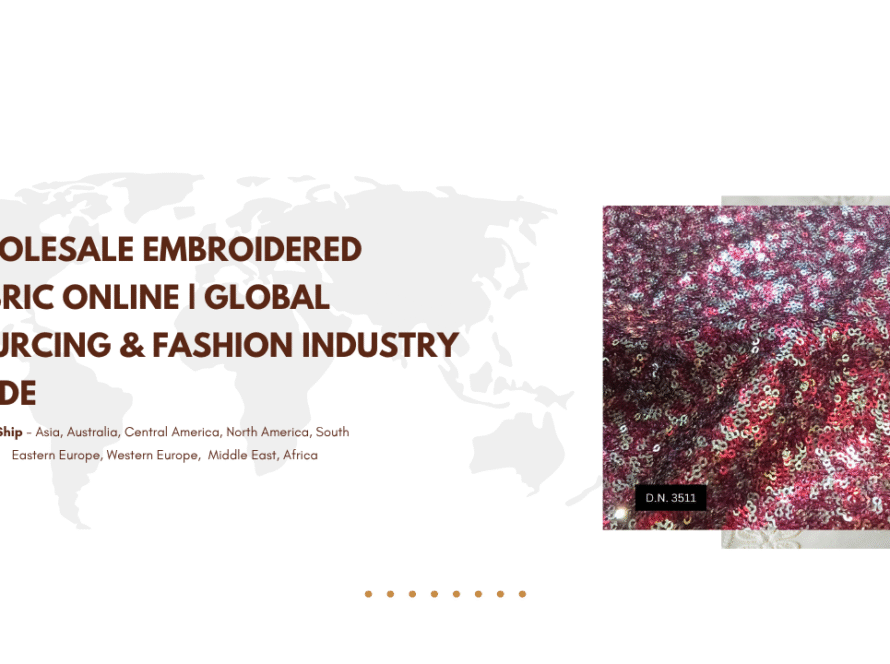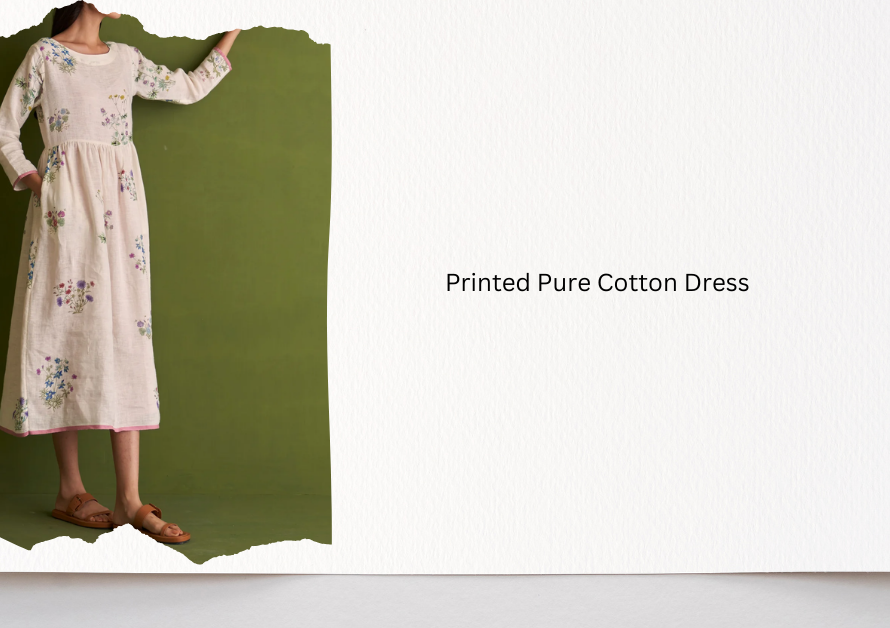Organza fabric is known for its lightweight, sheer, and glossy texture. Traditionally made from silk, it has evolved to include synthetic materials like polyester and nylon, making it more durable and affordable.
This fabric has a smooth, crisp feel, often used for adding volume and layers to garments, making it a favorite in bridal and evening wear.
Organza Embroidery Fabric: A Guide to Luxurious Textiles and Global Trends
Garments Made from Organza Fabric
Organza fabric is primarily used in high-fashion and formal garments, including:
- Bridal Gowns: Organza is favored for its ability to create structured yet delicate looks, often layered over satin or tulle.
- Evening Gowns and Party Dresses: Its glossy finish adds an element of sophistication.
- Sarees and Lehengas: In India, organza is popular for its rich yet lightweight appeal.
- Dupattas and Veils: It creates an ethereal effect with its semi-transparency.
Can Embroidery Designs Be Made on Organza?
Yes! Organza fabric is an excellent base for intricate embroidery designs. Due to its sheer nature, embroidery on organza needs to be carefully done to maintain the fabric’s delicate look without overwhelming it. Popular embroidery techniques on organza include:
- Zari Work: Metallic threads are woven into intricate patterns.
- Sequin Embroidery: Adds shimmer and sparkle.
- Thread Work: Embroidery using silk or cotton threads in floral or geometric patterns.
Types of Organza Fabric
Organza comes in several types, catering to different fashion and design needs:
- Silk Organza: The most luxurious form, lightweight, and expensive.
- Synthetic Organza: Made from polyester or nylon, offering more durability and affordability.
- Dyeable Organza: This type of organza is untreated, allowing designers to dye it in any color for customization.
- Printed Organza: Patterns and motifs are printed directly onto the fabric, often used for scarves, dresses, and dupattas.
- Embroidered Organza: Features intricate designs made using thread, sequins, or beads.
Difference Between Dyeable, Printed, Colored, and Embroidered Organza
- Dyeable Organza: Ideal for custom coloring, giving designers freedom to match any palette.
- Printed Organza: Designs and patterns are pre-printed, providing more structured and consistent designs.
- Colored Organza: Pre-colored fabric available in various shades, ready for garment production.
- Embroidered Organza: Features detailed, often handmade embroidery, adding texture and luxury to the fabric.
Madhav Fashion: Leading the Way in Organza Embroidery Fabric
Madhav Fashion is a pioneer in creating high-quality organza embroidery fabric, which is becoming globally popular. Their expertise lies in blending traditional embroidery techniques with modern designs, offering a wide range of customization options. From creating unique dyeable and printed organza to intricate embroidered fabrics, Madhav Fashion caters to both domestic and international markets.
Their organza embroidery fabrics are celebrated for their:
- Superior Craftsmanship: Skilled artisans bring designs to life with precision.
- Custom Designs: Offering bespoke embroidery based on client needs.
- Global Appeal: Exporting fabrics worldwide, their organza products are found in bridal, formal wear, and fashion collections across Asia, Europe, and North America.
Madhav Fashion’s attention to detail and commitment to quality make them a preferred choice for designers seeking luxurious organza embroidery fabrics for their collections.
_______________________________________________
What is Organza Fabric and What Makes It Special?
Organza is a sheer, lightweight fabric traditionally made from silk, though modern versions use polyester and nylon for durability. Its crisp, smooth texture and translucent appearance give it an ethereal quality, making it ideal for formal wear. The fine weave of organza allows light to pass through, giving it a glossy, sophisticated finish. Despite its delicate look, organza is quite strong due to its tight weave and the use of synthetic materials in modern production. It is primarily used for overlays, layers, and garments that require structure without weight, such as bridal gowns, evening dresses, and sarees. Its ability to maintain shape and volume without being too heavy makes it a top choice for high-end fashion and couture designs.
What Types of Garments Are Commonly Made from Organza Fabric?
Organza fabric is a staple in creating garments that are luxurious and lightweight, including:
- Bridal Gowns: Organza adds volume and texture to wedding dresses, especially for full skirts and veils.
- Evening and Prom Dresses: Its glossy appearance enhances formal gowns.
- Lehengas and Sarees: In India, organza is used to make rich, lightweight outfits, especially for weddings and festivals.
- Dupattas and Shawls: Organza’s transparency makes it perfect for delicate accessories that add elegance to an outfit.
Organza is also used for adding structure and volume to garments, such as underskirts and petticoats. Designers appreciate its versatility, as it can be layered over heavier fabrics without overwhelming the final look.
Can Embroidery Be Done on Organza Fabric?
Yes, organza is an excellent base for embroidery. Its sheer texture allows embroidery designs to stand out beautifully, making it ideal for intricate detailing. Embroidery on organza can range from simple thread work to elaborate sequin or bead patterns. However, since the fabric is lightweight and delicate, care must be taken to ensure the embroidery doesn’t weigh down or damage the fabric. Popular embroidery techniques on organza include zari work, sequin embroidery, and silk thread work. These designs add a luxurious, textured look to the fabric, making it a popular choice for bridal wear, sarees, and formal gowns. With the right techniques, embroidery on organza enhances its ethereal beauty while maintaining its structural integrity.
What Are the Different Types of Organza Fabric?
Organza comes in several types, each catering to specific fashion and design needs:
- Silk Organza: The most luxurious type, made from pure silk, offering a soft and elegant feel.
- Synthetic Organza: Made from polyester or nylon, this type is more durable and affordable.
- Dyeable Organza: This untreated version of organza allows designers to dye it in custom colors.
- Printed Organza: Features pre-printed patterns and motifs, often used for scarves and lighter garments.
- Embroidered Organza: Decorated with intricate hand or machine embroidery, often used in high-end fashion.
Each type of organza has its unique advantages, whether it’s the customization potential of dyeable organza or the luxurious feel of silk organza. Designers choose the type based on the garment’s purpose and desired aesthetic.
What is the Difference Between Dyeable, Printed, Colored, and Embroidered Organza Fabric?
Organza fabric comes in several forms, each serving different design purposes:
- Dyeable Organza: This fabric is untreated, allowing it to be custom-dyed in any color to match specific design requirements.
- Printed Organza: Features patterns or motifs printed directly onto the fabric, offering a more structured and consistent look.
- Colored Organza: Pre-colored organza comes ready to use in various shades without the need for dyeing.
- Embroidered Organza: Embellished with intricate designs using threads, sequins, or beads, adding texture and luxury to the fabric.
Each type of organza serves different design needs, from custom-dyeing for unique shades to pre-embroidered fabric that adds instant elegance to any garment.
Why is Organza Fabric Popular for Bridal Wear?
Organza is highly popular in bridal wear due to its lightweight yet structured nature. Brides often seek fabrics that offer elegance, volume, and a soft glow without being too heavy, and organza meets these needs perfectly. It adds volume to wedding gowns without bulk, making it ideal for creating full skirts and long trains. The fabric’s transparency and sheen add a layer of sophistication, often used in veils, overskirts, and layered gowns. Organza’s ability to hold shape also makes it perfect for creating dramatic silhouettes. Additionally, the fabric works beautifully with embroidery, allowing designers to craft intricate details that enhance the bridal look.
What Makes Embroidered Organza Fabric Unique?
Embroidered organza fabric is unique due to its blend of delicate transparency and detailed craftsmanship. The sheer quality of organza provides an ideal background for showcasing embroidery, whether it’s floral, geometric, or abstract patterns. Embroidery on organza is often done using fine silk or metallic threads, sequins, and beads to create designs that appear to float on the fabric. The lightness of organza combined with intricate embroidery work results in a luxurious yet airy fabric, perfect for high-end fashion, bridal wear, and formal attire. The combination of texture and translucency makes embroidered organza stand out in any garment.
What is Dyeable Organza Fabric and Why is It Useful?
Dyeable organza is untreated, allowing designers and manufacturers to dye the fabric to match specific color requirements. This makes dyeable organza extremely versatile, as it can be custom-colored to fit any design vision. Designers often use dyeable organza when they need to match precise shades for fashion collections, bridal wear, or event décor. The fabric’s ability to take on vibrant colors while maintaining its signature sheen makes it a preferred choice for custom designs. Dyeable organza is particularly useful in the fashion industry, where color matching is crucial for cohesive collections and custom garments.
How Does Madhav Fashion Produce the Best Organza Embroidery Fabric?
Madhav Fashion excels in creating high-quality organza embroidery fabric by blending traditional craftsmanship with modern techniques. Their artisans are skilled in various embroidery styles, ensuring each piece of fabric is crafted to perfection. Madhav Fashion offers custom designs, allowing clients to choose from a range of embroidery techniques, from delicate thread work to elaborate sequin and bead designs. Additionally, they provide dyeable, printed, and colored organza, catering to diverse fashion needs. Their commitment to using top-quality materials and attention to detail has made Madhav Fashion a leader in the global organza fabric market, with their products being used by designers worldwide.
Why is Organza Embroidery Fabric Gaining Popularity Globally?
Organza embroidery fabric is gaining popularity due to its luxurious appeal and versatility in high-fashion garments. The combination of delicate organza and intricate embroidery creates a fabric that is both elegant and unique. Organza’s lightweight, sheer texture makes it ideal for formal wear, while embroidery adds richness and texture. This combination is increasingly in demand for bridal wear, evening gowns, and couture fashion across the globe. Moreover, organza’s ability to hold shape without being heavy makes it perfect for dramatic, voluminous designs. As more designers explore its potential, organza embroidery fabric continues to rise in popularity, especially in global markets where premium fabrics are sought after.






